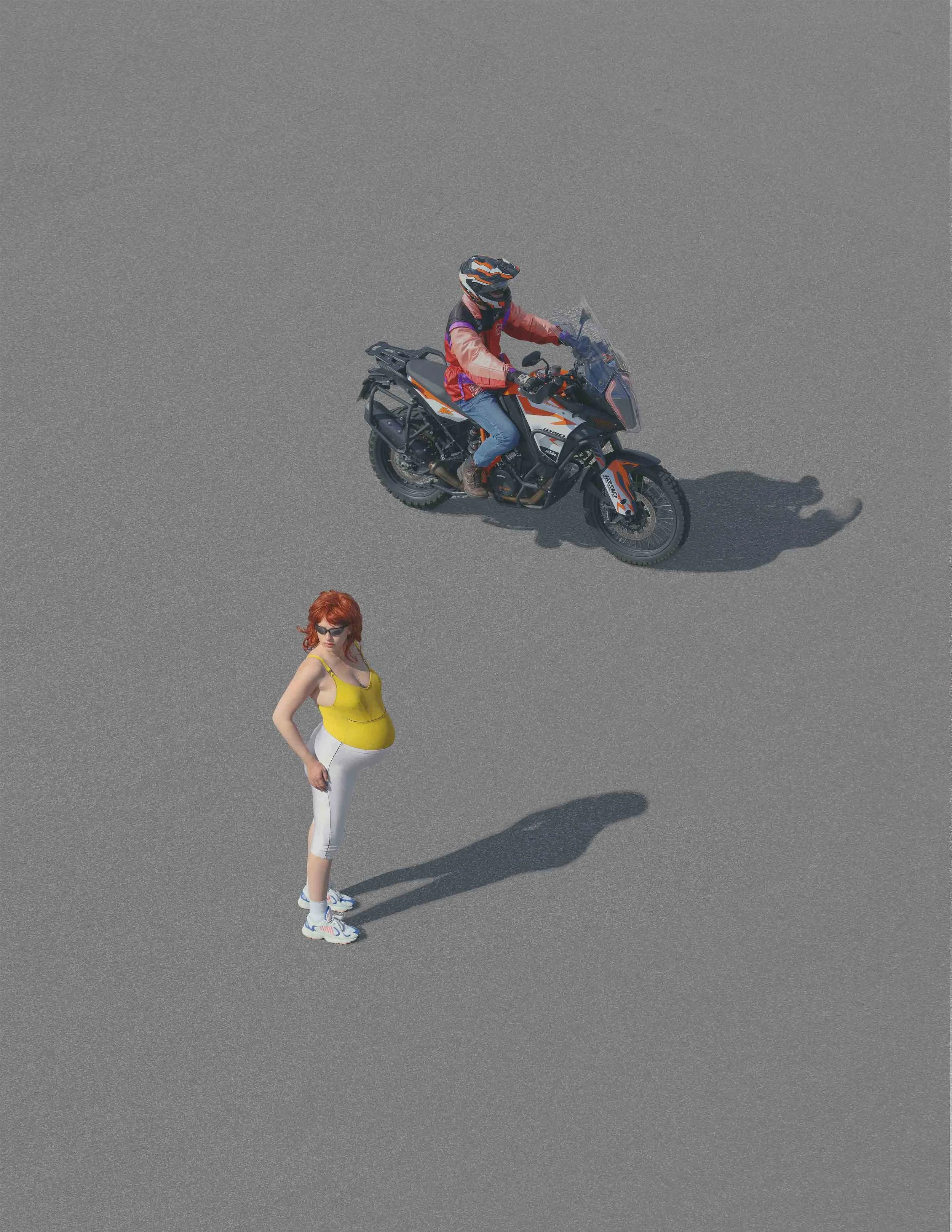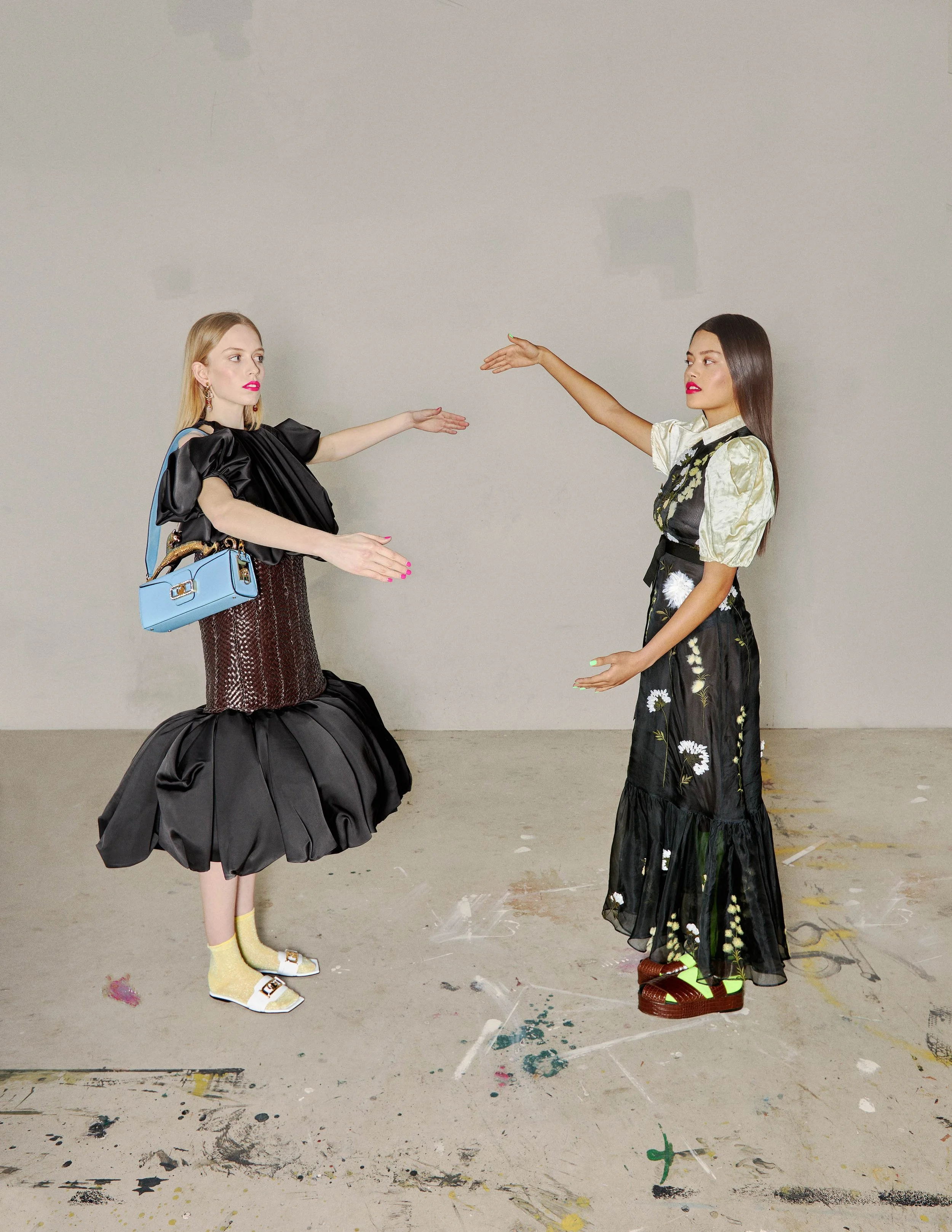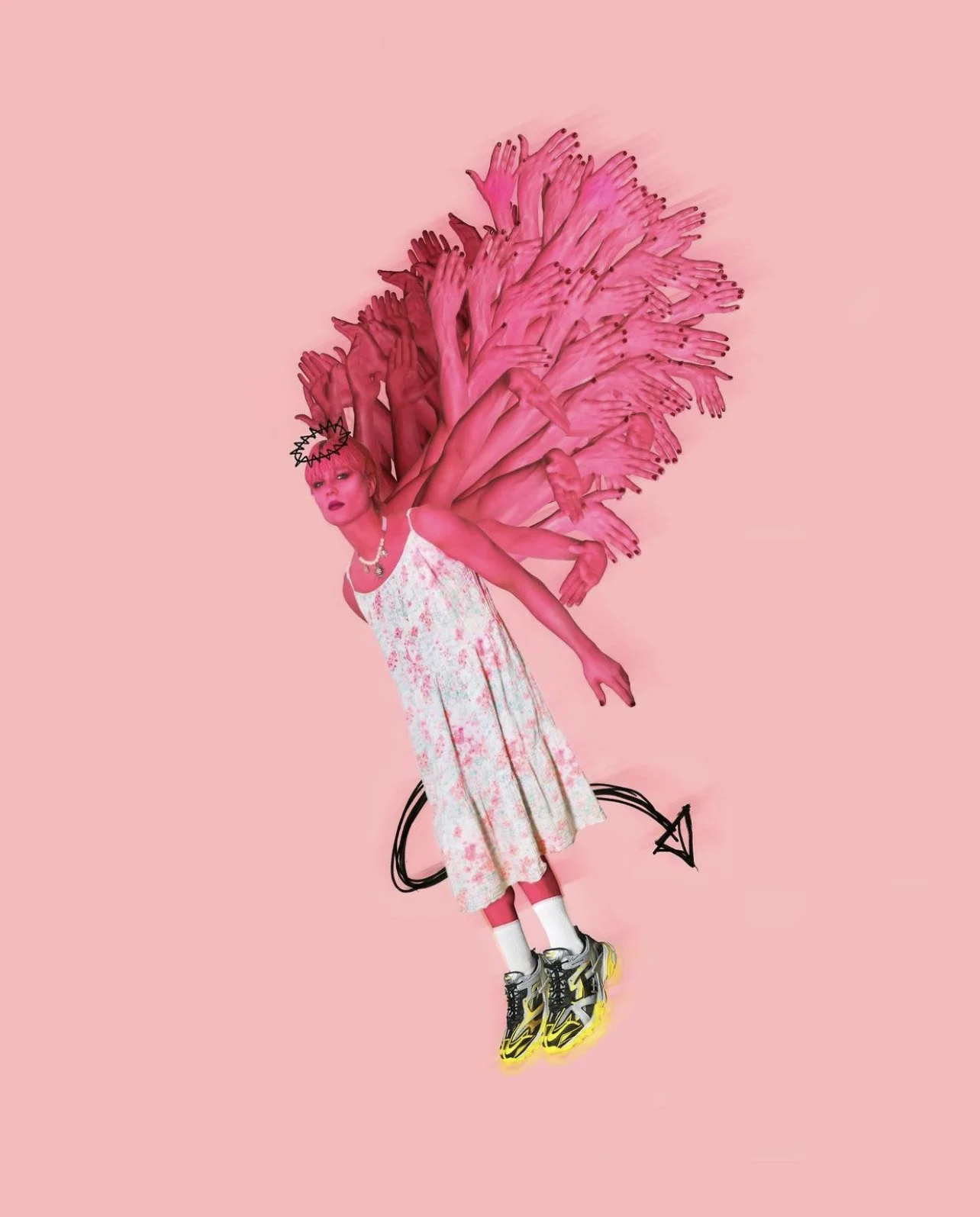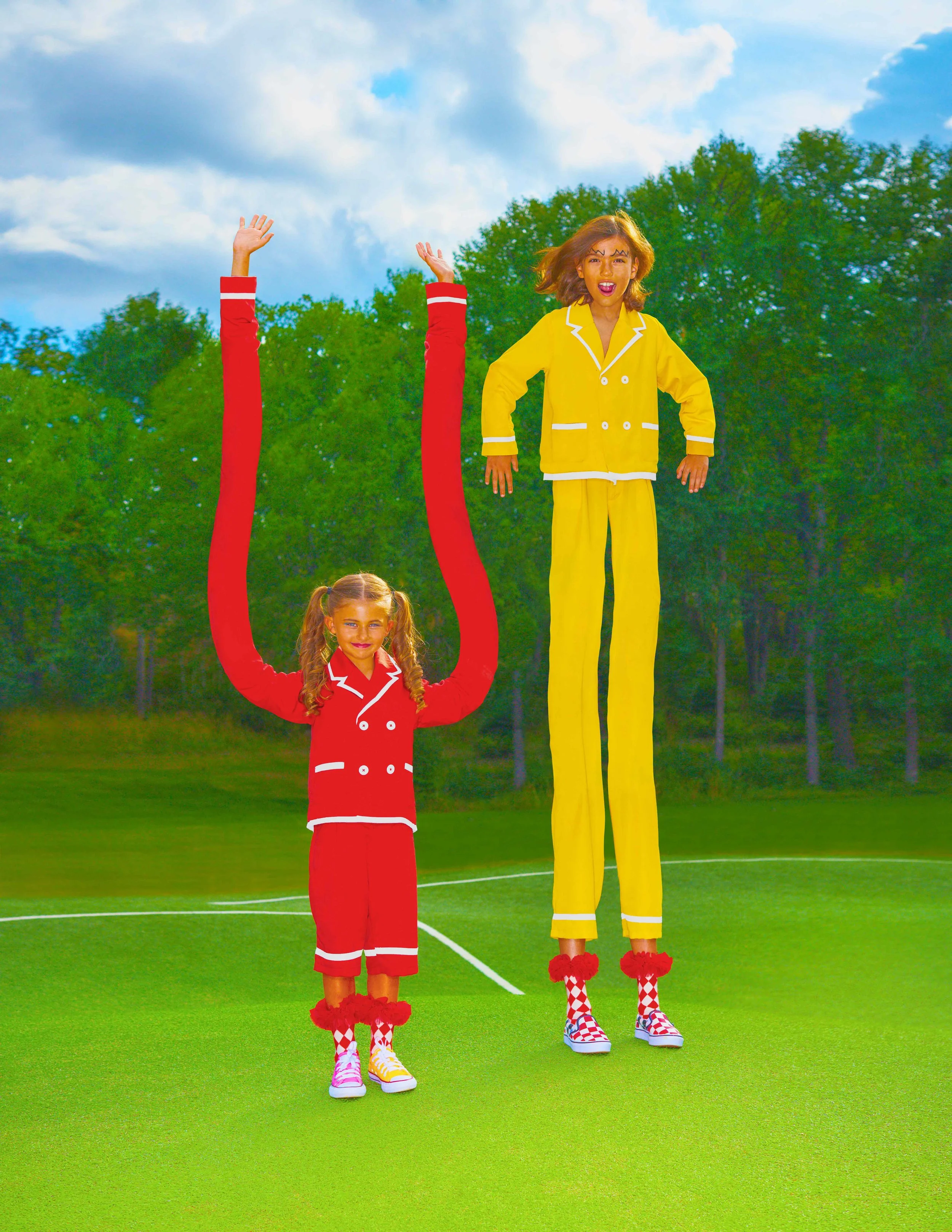This is: Chris Calmer
A Candid Conversation with Chris Calmer. On CC’s life, colours, escapism, and beauty.
Words by Ann-Sophie Choi.
CHRIS CALMER is a Danish photographer and visual artist working in the intersection between art, fashion, and commercial photography – connecting the dots in a sometimes hyperrealistic, other times dreamy, and otherworldly manner. I caught up with him on a stormy Copenhagen Summer evening to chat about matters FROM HIS HEART.
In 2017, Chris moved to Paris to work as a freelance retoucher on jobs for Galleries Lafayette, Liberty London, Dior, and V magazine. Chris is known for his fun and original concepts, and his quest to challenge mainstream aesthetics. He is well known for his magazine editorials for Dansk Magazine, his campaigns for Puma, Happy Socks, and his exhibition for Ikea, as well as for his work for Martin Asbjørn, Hanrej, Stine Goya, and his collab with Uffe Buchard and many more. His studio is now based in Copenhagen.
Hi Chris! I’m excited to hear about your story. Were you always in photography and art?
CC: My father was an artist - he did all kinds of paintings and sculptures and he had an art school, where he did a lot of work with adults and children. My father died when I was 14, and I like to mention him because he had a big impact on me. I started photography when I was 14, and I was obsessed with pop culture. I moved to Paris when I was 19 to work for a photographer and I did a lot of retouching work for brands. Being there, I learned a lot about production, technicals, and all the aspects of putting together a shooting set. I was working with analogue, medium format, so I did contact sheets, and retouched dust away from image scanning - I did all post-production for analogue shoots.
Isn’t it helpful to learn the whole process around pre- and post-production? To understand the technique, and then be able to create art purposefully?
CC: Definitely. I remember one thing that really stuck with me was knowing your references. So that’s something I like to think about a lot in my work, you know, knowing what this pattern or what that colour means or just all the aspects of an image.
You work a lot with colours. Why so?
CC: Photography and just art, in general, have always been a form of escapism for me. Especially colours and things that were positive and overexaggerated. So colours are in that way, I think, fun. I’ve never explored depressive imagery. Because it doesn’t really benefit my mental health.
So your art was a way for you to improve your mental health as well?
CC: Totally. When things are not moving in life the way that I think they are, creating something, and being productive can help me overcome the lack of control in my life.
And you are creating beauty. You are making more beauty for other people to see and enjoy.
CC: Yeah :-)
On your Instagram, your bio says “FROM MY HEART”. What does that mean to you?
CC: Yeah, I love it. It is kind of a commentary on why I create - I create when I feel like I have something to say. There is a lot of competition in the art world and I don’t feel like playing into that energy. With photography, I like to take a step back and just create something for me, for myself, with the concept that I like to explore. What I do is very personal.
Let’s talk about your latest project, the self-portrait series “Be Your Own Angel”. You told me you have a lot to say about it!
CC: Oh I did? Now you’re making me nervous. Regarding the angel series - I was going through a really bad time. I had a lot of issues with my family, and I just recovered from Covid. And you know, I have not prioritised friendships and just genuinely felt a bit like nobody cared, except myself. The concept of the series is kind of a metaphor. I had the idea of literally lifting someone up, and I found the thought of turning my hands into wings quite beautiful. Then I thought about who I would shoot for this series and ultimately, I thought it can only be myself who I’d shoot. I asked myself who would I want to turn into an angel? It was such a personal idea that I had to do it by myself. There are a lot of photos that I actually never published.
Looking at the angels right now, is there a specific one for which you have a story to tell about?
CC: For each one, I was sketching them, and I was thinking a lot about the references and the colours. I kind of saw them as game avatars in a way that they could be in an action comic. The idea was to build different characters and I call them different names. The pink one is the very feminine Love Angel, I have used pink in past works to represent my queerness and I just like the history of pink. Then there is the City Angel, where I hide myself in black, kind of not showing my inner self.
What are your favourite colours?
CC: It’s always been very specific shades of pink, yellow, and blue. And I have a thing that I can only have those colours in my apartment. The only new colour I have introduced is green, which I’m still kind of love-hating. Whenever I see something brown I have to paint it. It’s almost compulsive.
I think statistically, brown is voted the ugliest colour.
CC: Really? I remember when I was painting as a kid, I would mix all colours and then everything would turn brown. Brown was what you shouldn’t do with colours.
So we just talked about the angel series. Other than that, do you have any favourite themes to explore through your art, and why?
CC: Favourite themes? Not really. I think whatever comes to my mind, I like to explore. But I always cross-examine every idea I have. I go to Google, and I see if anybody had the same idea as I’ve had. And if it happens, then I just stop the process because I don’t want to do anything that anybody has done before. And then sometimes I have certain ideas, and a commercial job pops up, so I try to kind of connect the ideas and merge them with whatever comes up. I always try to make it personal.
I mean, art is a form of personal expression, right?
CC: I think so. But it’s not what I’ve been seeing lately within the art industry. There seems to be a disconnect between the art and the artist a lot. But I don’t mean to sound critical of other people’s art. In general, most people like to look at beautiful things. But that’s not why I create, you know? I create because I feel like I have something to say to myself, but I obviously would also want people to like it.
See, I think that beauty is such a big term. And there is so much beauty in the ugly as well!
CC: Absolutely.
“There is no beauty without strangeness.” What is your stand on this? What is beauty to you?
CC: For me, beauty is confidence and I don’t know if this is a lame answer. I don’t want to define what beauty is. I find confidence very attractive. So for me, that’s beauty. To daringly try to be yourself, that’s beautiful.
That is indeed beautiful. Where do you draw inspiration from? Or who and what inspires you at the moment?
CC: My dad always taught me to find inspiration wherever you are. So he would paint people around him - old women on benches, the trees and lakes around him. He taught me to be aware and grateful for our environment. So when we would bike over a bridge, he would tell me to look out and notice how beautiful it is. I also find a lot of inspiration in myself. My ideas kind of come out of nowhere, so I try to not force them. And I try to not look at other people’s work because then you just end up subconsciously copying them and I think that’s not good.
If you were to teach something to your younger self, what would it be?
CC: I would say don’t listen to anybody else’s advice. Because they might not know what is best for you specifically, so practice and listen to your intuition more.
That’s a nice one. Did you know that our gut is directly linked to our brain? That’s why we also call intuition “gut feeling”!
CC: Yeah it’s so crazy! The intestines produce more serotonin than your brain. When you tell people this, they are like “what??” But I take probiotics for my gut and mental health because it’s so important. It’s so underestimated.
I have a last question for you and it sounds so macabre. But if you were to die, what would your famous last words be?
CC: Oh my God. I’ve always been thinking about how I wanna leave a big book of all my work. I don’t think I will say anything. I will just leave my life’s work and the images.





